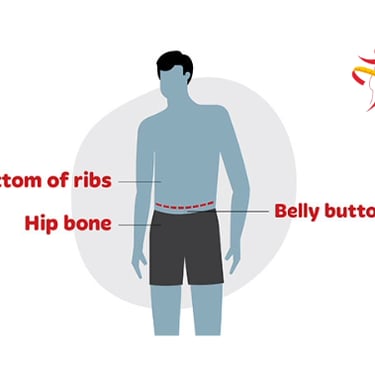Am I Overweight or obese?
Knowing about your weight is the first step.
Dr Vinaykumar Mukhekar
9/5/20252 min read


Body weight is a personal thing. People hesitate to discuss about their own overweight or obesity. It is also a social stigma. However, knowing about overweight and obesity can help you to protect your health. Weight that is higher than what is considered as a healthy weight for a given height is described as overweight or obese. Body Mass Index, or BMI, is used as a screening tool for overweight or obesity.
How to know I am overweight or obese?
The first step can be to check your BMI. Body Mass Index (BMI) is a person’s weight in kilograms divided by the square of height in meters. A high BMI can be an indicator of high body fatness.
How to Calculate BMI?
Measure your weight in kilograms (kg) and height in meters (m). Square your height: (multiply your height by itself). Divide your weight by the squared height: to get your BMI.
Formula: BMI = weight (kg) / (height (m))^2
For example, if your weight is 70 kgs and height is 1.6 meters then the first step is to square the height: 1.60 m * 1.60 m = 2.56 m². Then divide the weight by squared height: 70 kg / 2.56 m² = 27.3.
Your BMI is 27.3.
Your BMI is just one piece of the puzzle. It’s based on height and weight but doesn’t take into account your muscle mass, bone density, or body composition. Your healthcare provider will consider whether your BMI is too high or too low for you.
However, in addition to BMI, We need to measure waist circumference as well.
How to measure Waist Circumference?
To correctly measure waist circumference:
• Stand and place a tape measure around your middle, just above your hipbones
• Make sure tape is horizontal around the waist
• Keep the tape tight around the waist, but not compressing the skin
• Measure your waist just after you breathe out
If your Waist Circumference is >90 cm in men and >80 cm in women then you should seek medical help so that obesity-related risk factors could be investigated and managed. This information is applicable to adult men and non-pregnant women only.
What to do if you are overweight or obese?
The presence of overweight and obesity is of medical concern because it increases the risk for several diseases, particularly Heart diseases (CVDs) and diabetes and it increases all-cause mortality.
Treatment of the overweight and obese person is a two-step process:
1. Assessment: The patient’s risk status should be assessed by determining the degree of overweight or obesity based on BMI, the presence of abdominal obesity based on waist circumference, and the identification of Heart risk factors, diabetes and breathing difficulty during sleep, blood fat levels, smoking and others.
2. Management: It includes reducing excess body weight and maintaining that weight loss as well as initiating other measures to control associated risk factors. All patients who are overweight (BMI 23 to 24.9), or do not have a high waist circumference (>90 cm in men and >80 cm in women), and have few cardiovascular risk factors and do not want to lose weight, should be counseled regarding the need to keep their weight at or below its present level. Patients who wish to lose weight should be guided.
If you need help then book the consultation with the specialist doctor then you are just one click away.
